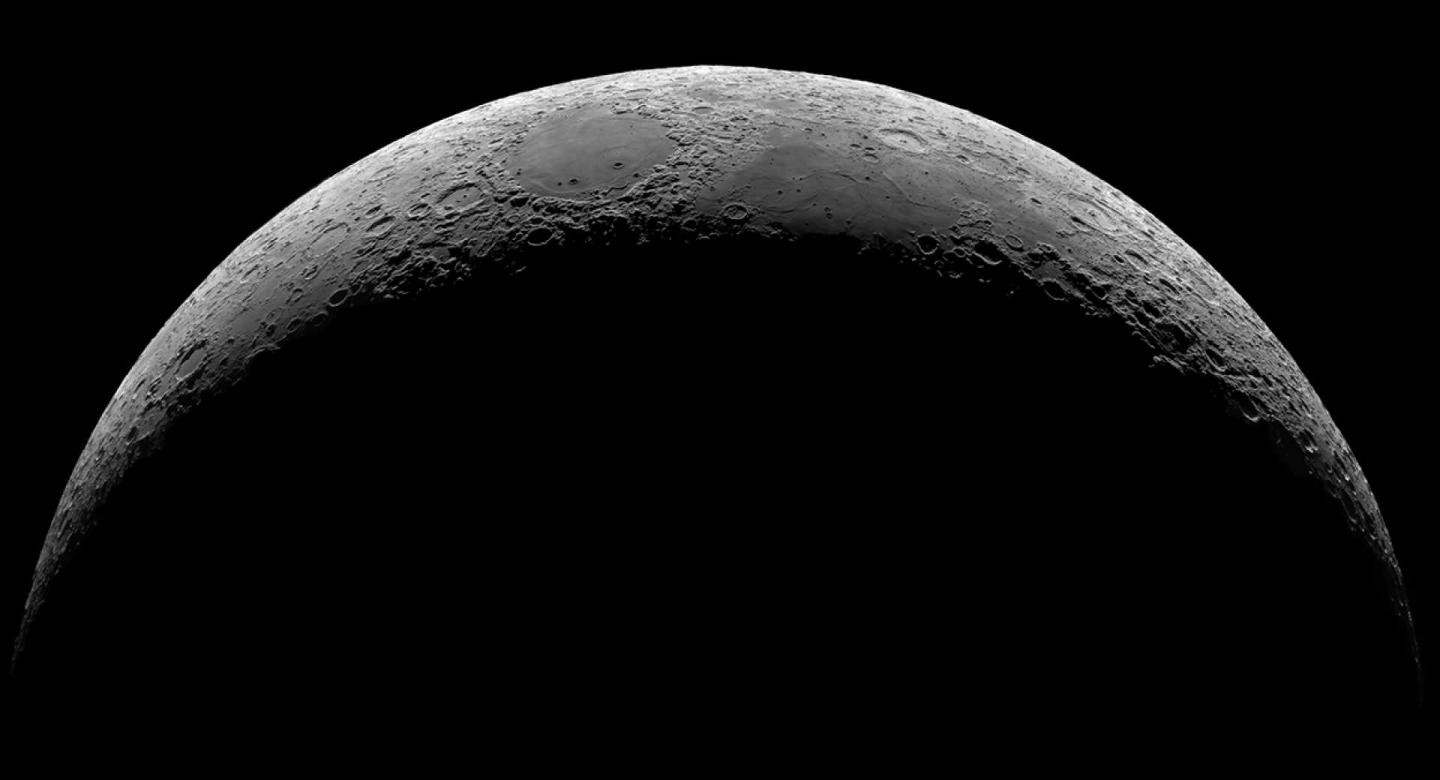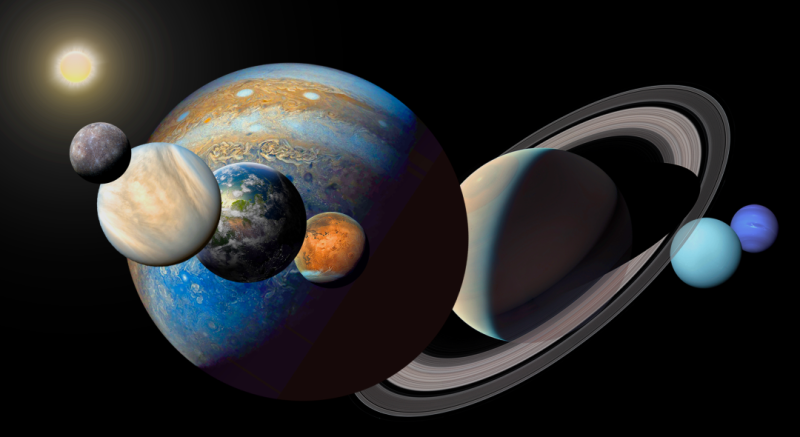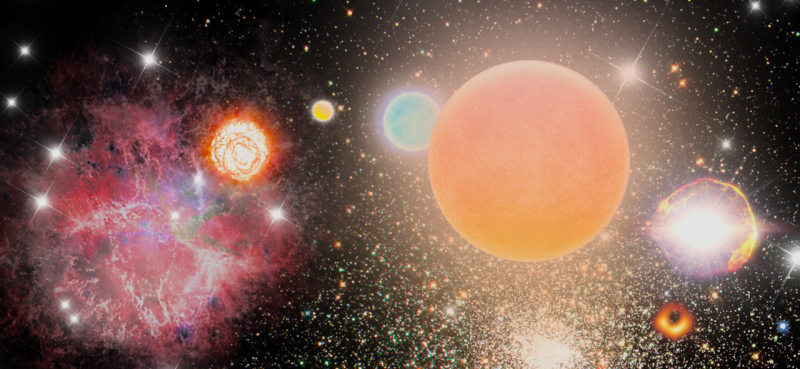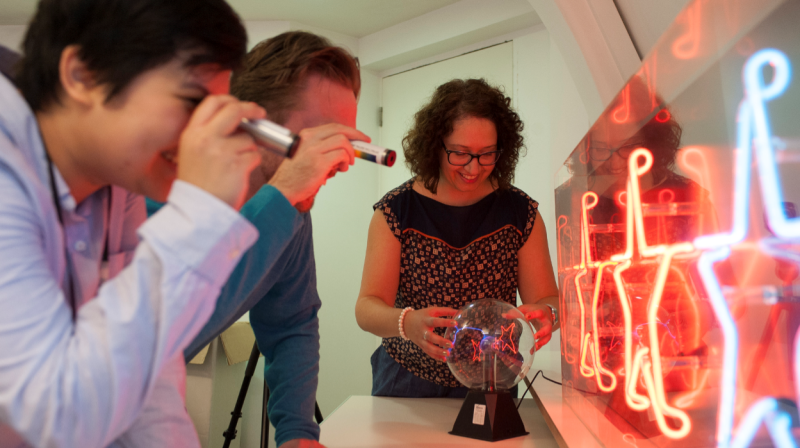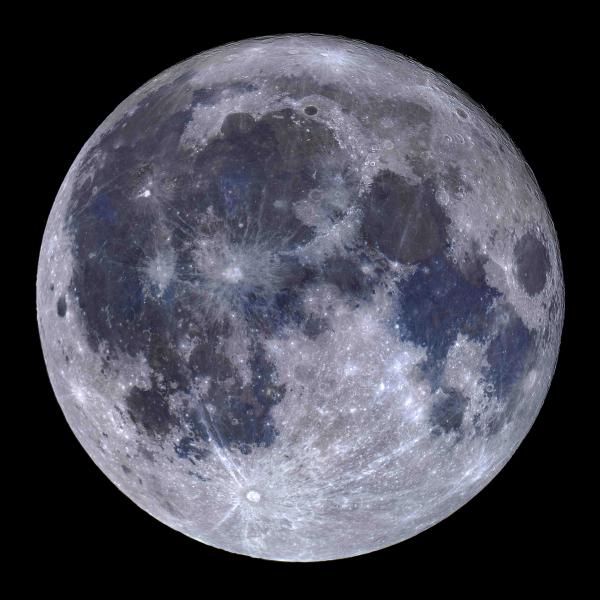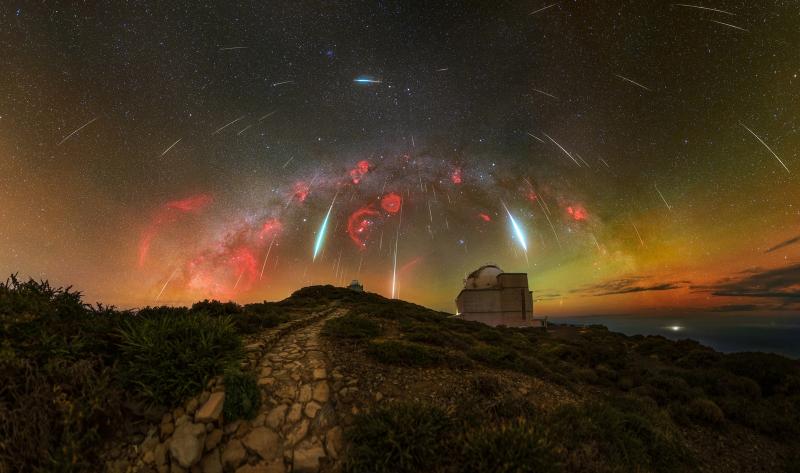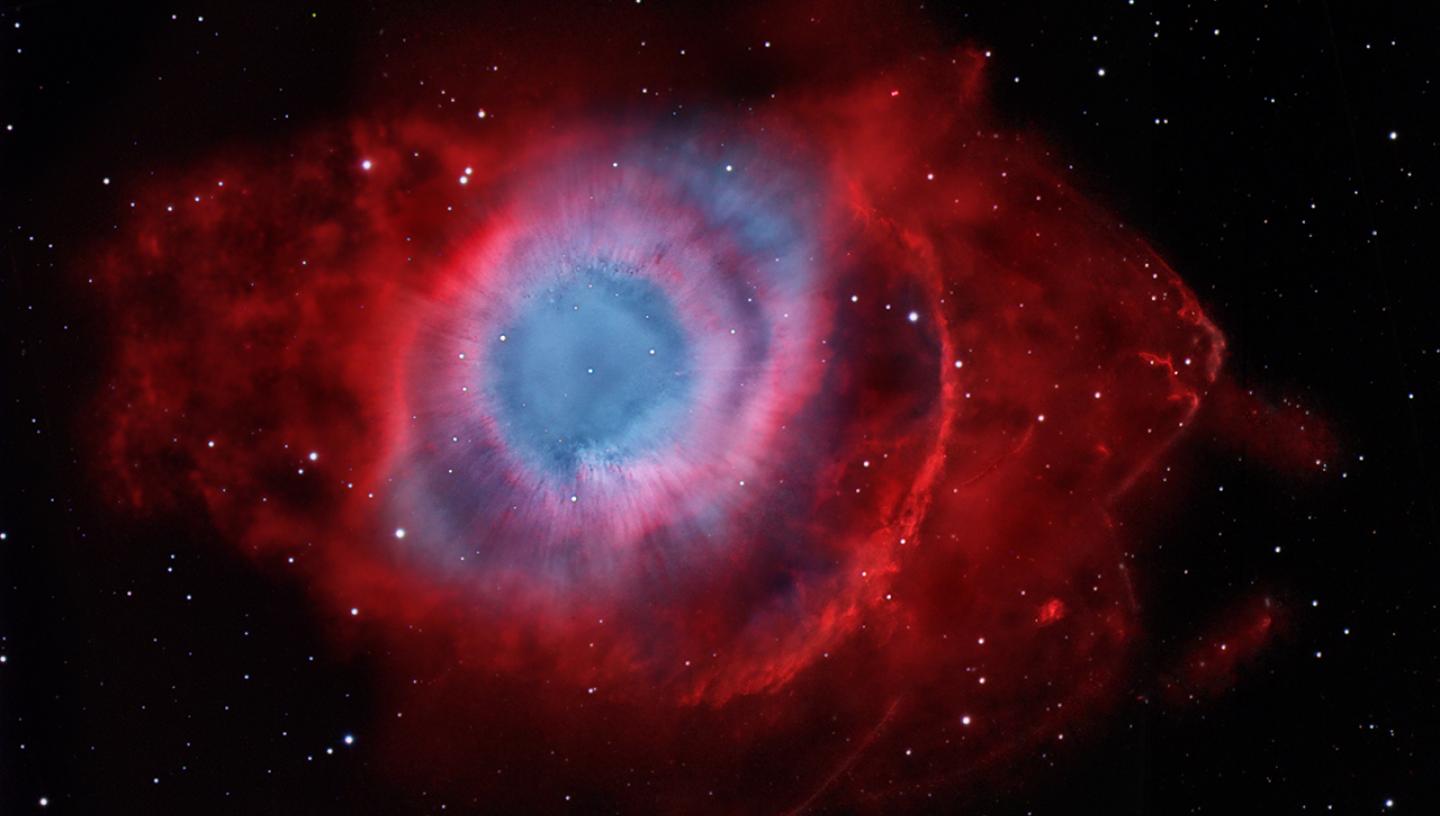
Discover what to see in the night sky in May 2021, including the Super Flower Moon and some spring constellations
Top 3 things to see in the night sky in May
- Throughout the month – Spot the constellations of Boötes, Corona Borealis and Hercules
- 6 May – Keep an eye open – it’s the peak of the Eta Aquariids meteor shower
- 26 May – The Super Flower Moon
Look Up! Podcast
Subscribe and listen to the Royal Observatory Greenwich's podcast Look Up! As well as taking you through what to see in the night sky each month, Royal Observatory Greenwich astronomers pick a topic to talk about.
For May, they're talking about Marsquakes that have been detected by NASA's Insight Lander, and they're discussing the recent results from Fermilab and the LHCb experiment that suggest the Standard Model may be missing something.
Have a listen below, then vote for your favourite story from this episode on our Twitter poll (@ROGAstronomers) during the first week of the month
Our podcast is available on iTunes and SoundCloud
Astronomy in May 2021: key events and what to see
Details given are for London and may vary for other parts of the UK
Throughout the month – The constellations of Boötes, Corona Borealis and Hercules
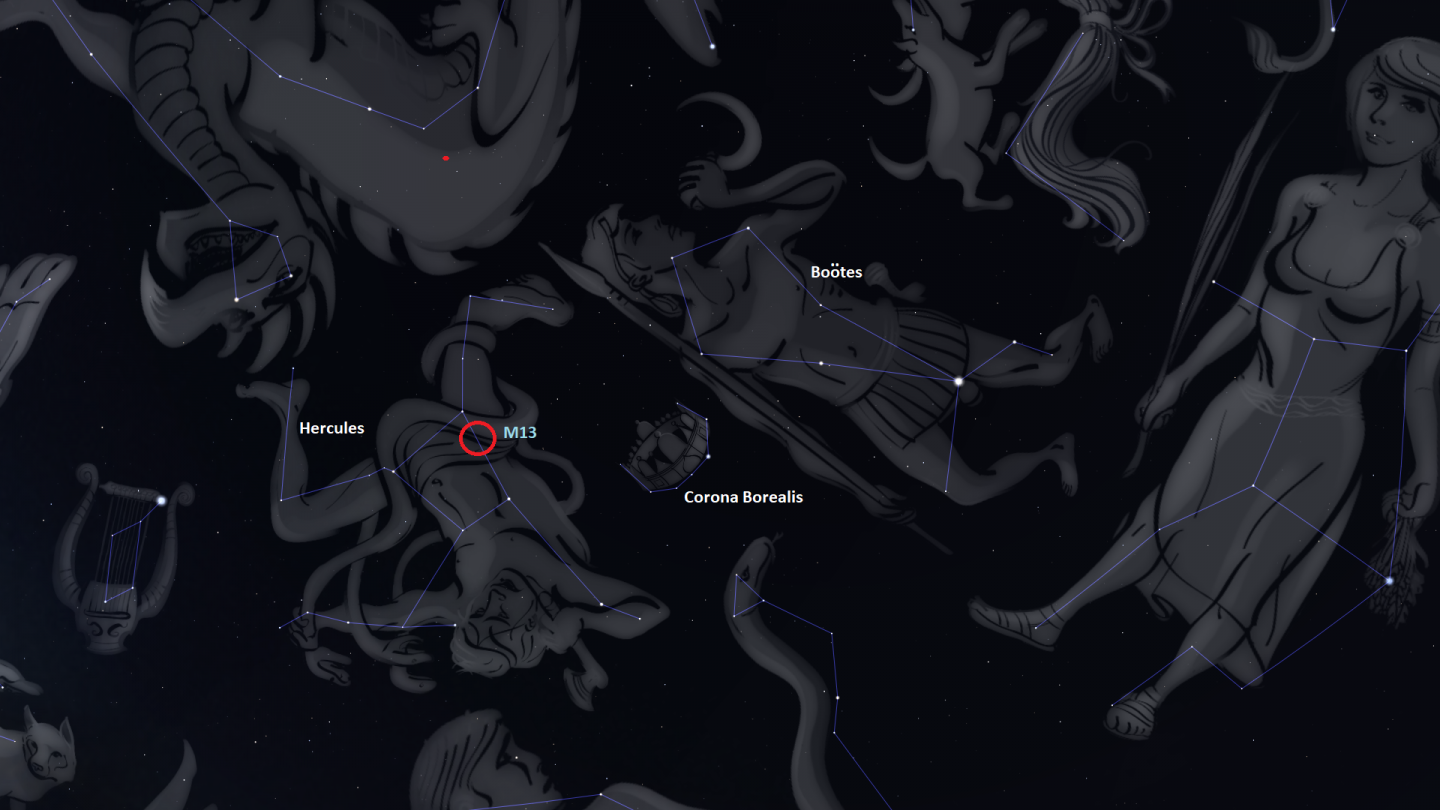
While we’re enjoying the warmer weather of spring, why not explore some of the spring constellations. After sunset, once the sky is dark enough, look towards the South and see if you can spot the kite shaped constellation of Boötes the Herdsman. The red giant star Arcturus is the brightest star in the constellation but that’s not all - Arcturus is also the fourth-brightest star in the night sky and the brightest star in the Northern Celestial Hemisphere. Lying to the left of Boötes is a semi-circle of stars – this is the tiny constellation Corona Borealis, also known as the Northern Crown. The brightest star in this constellation is Alphecca and is known as the jewel of the crown.
If you want to add one more constellation to your observing list, then look to the left of the crown and you’ll spot the constellation of Hercules, the Strong Man. The four central stars of the constellation form an asterism known as the Keystone and you can use this asterism to find the globular star cluster M13, also known as the Great Globular cluster. Best viewed through binoculars or a telescope, this impressive star cluster lies around 25,000 light years from the Earth and is home to over 100,000 stars.
6 May – The peak of the Eta Aquariids meteor shower
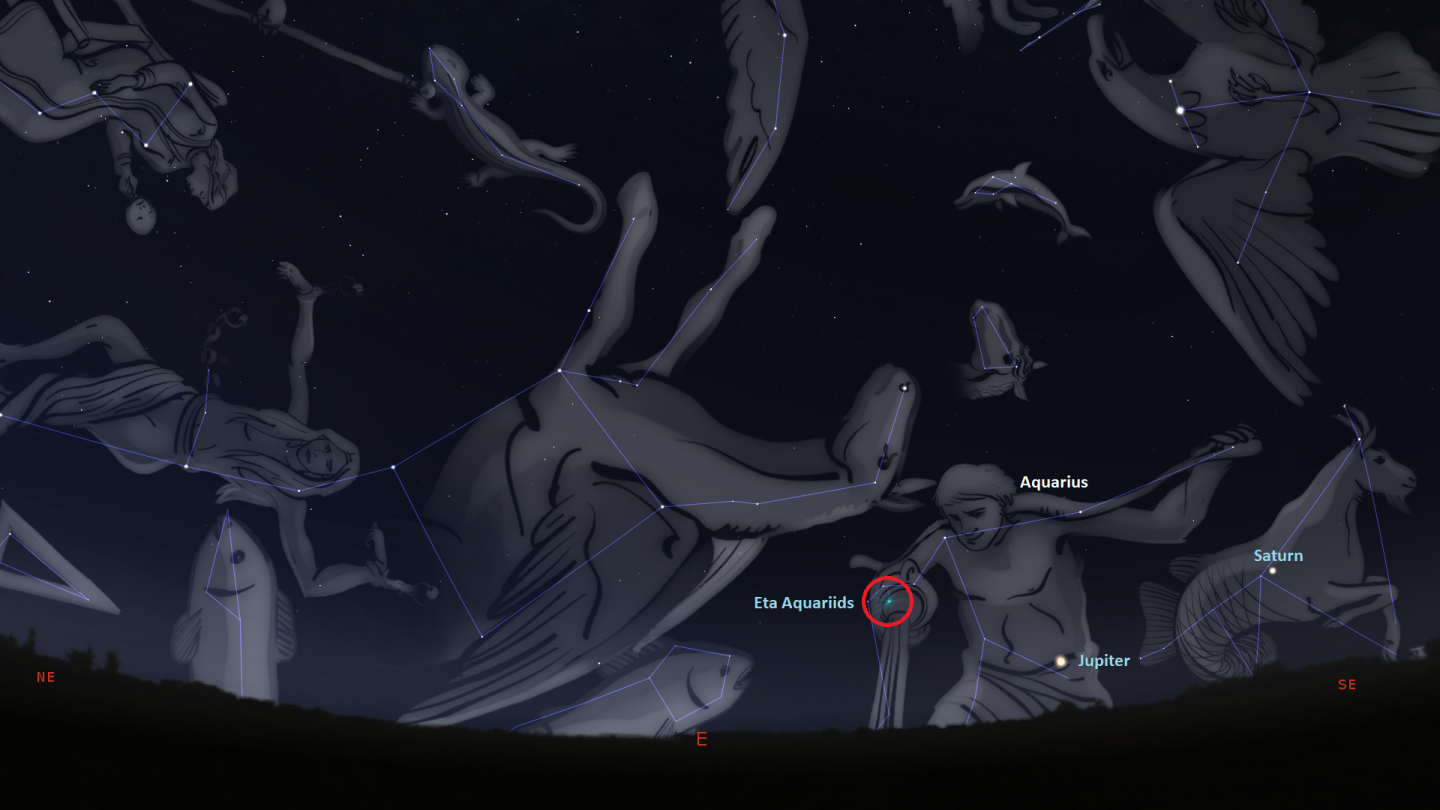
The early hours of May 6th sees the peak of the Eta Aquariids meteor shower, and with around 50 meteors per hour expected at the peak (for Northern Hemisphere observers, the rate will be up to 20 meteors per hour), it should be a good show. Meteor showers are produced when the Earth passes through dusty debris left behind by comets, and sometimes asteroids, as they make their way through the Solar System. The comet responsible for the Eta Aquariids shower is Halley’s Comet, which is also responsible for the Orionids meteor shower which peaks later in the year in October.
The good news is that the moon will be in a favourable phase for this year’s shower, but the bad news is that the radiant for this meteor shower will only be visible from London just before sunrise, and even then it will be low above the Eastern horizon. To maximise your chances of spotting some meteors, find a clear and unobstructed view of the Eastern horizon and scan the skies around Aquarius using just your eyes – they’re the best tool for the task!
While you’re keeping an eye out for meteors, why not do some planet observing too. The gas giants Jupiter and Saturn will both be shining brightly above the South-Eastern horizon before sunrise. If you have binoculars or a telescope with you, see if you can spot the Galilean moons of Jupiter, or Titan, the largest moon of Saturn.
Find out more about the Eta Aquariids meteor shower
Learn about other meteors and meteorites around the year
14 May - The Moon, Mercury and Venus
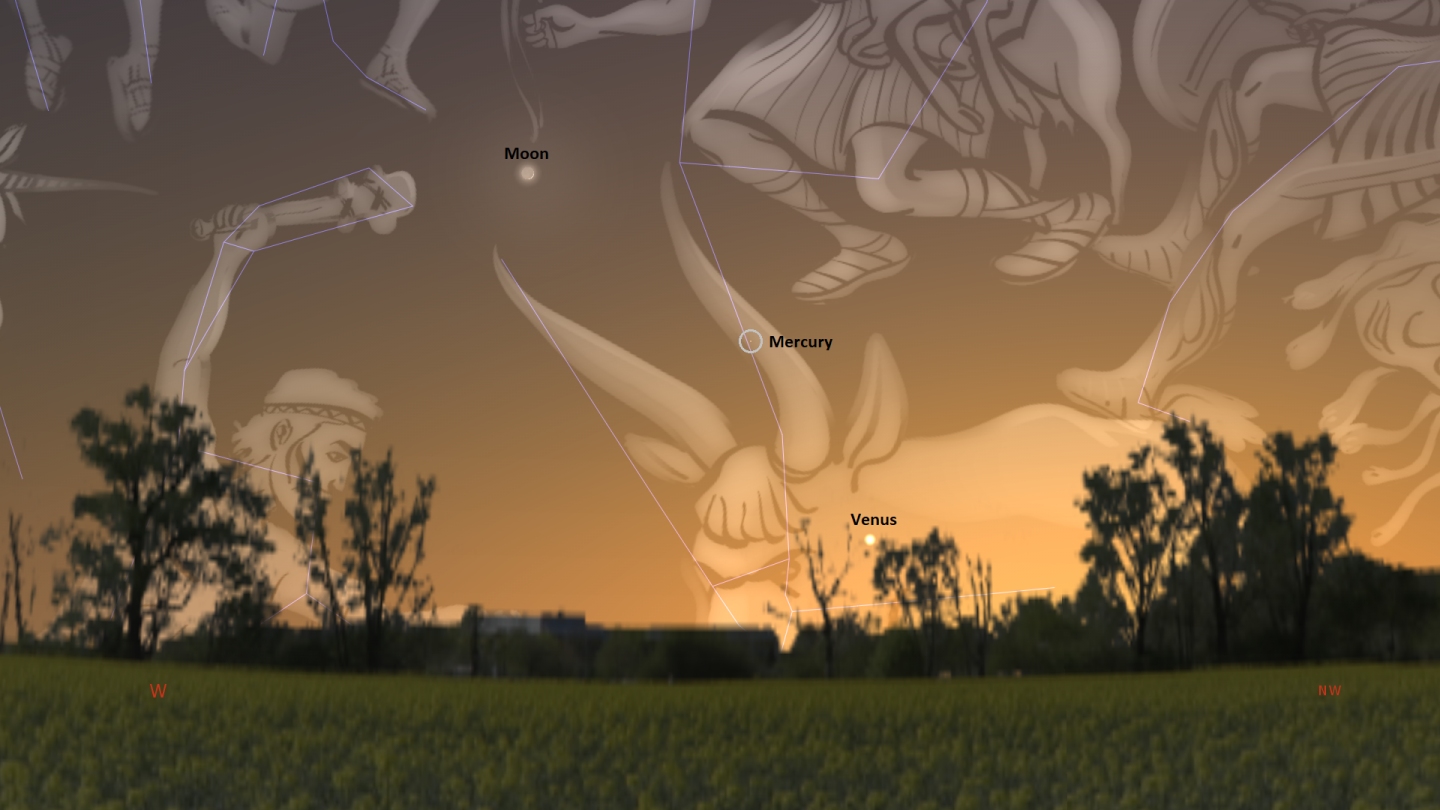
If you’re not keen on being outside in the early hours of the morning but still want to observe some planets, then wait until the 14th and look towards the West just after sunset. You should see the waxing crescent Moon and the planets Mercury and Venus, with both planets lying low above the Western horizon. If you’re a fan of the red planet, it will be visible too, just wait for the sky to get a bit darker and search for the constellation of Gemini the Twins. Mars’ distinctive red colour will make it easy to spot amongst the stars in the constellation.
26 May - The Super Flower Moon
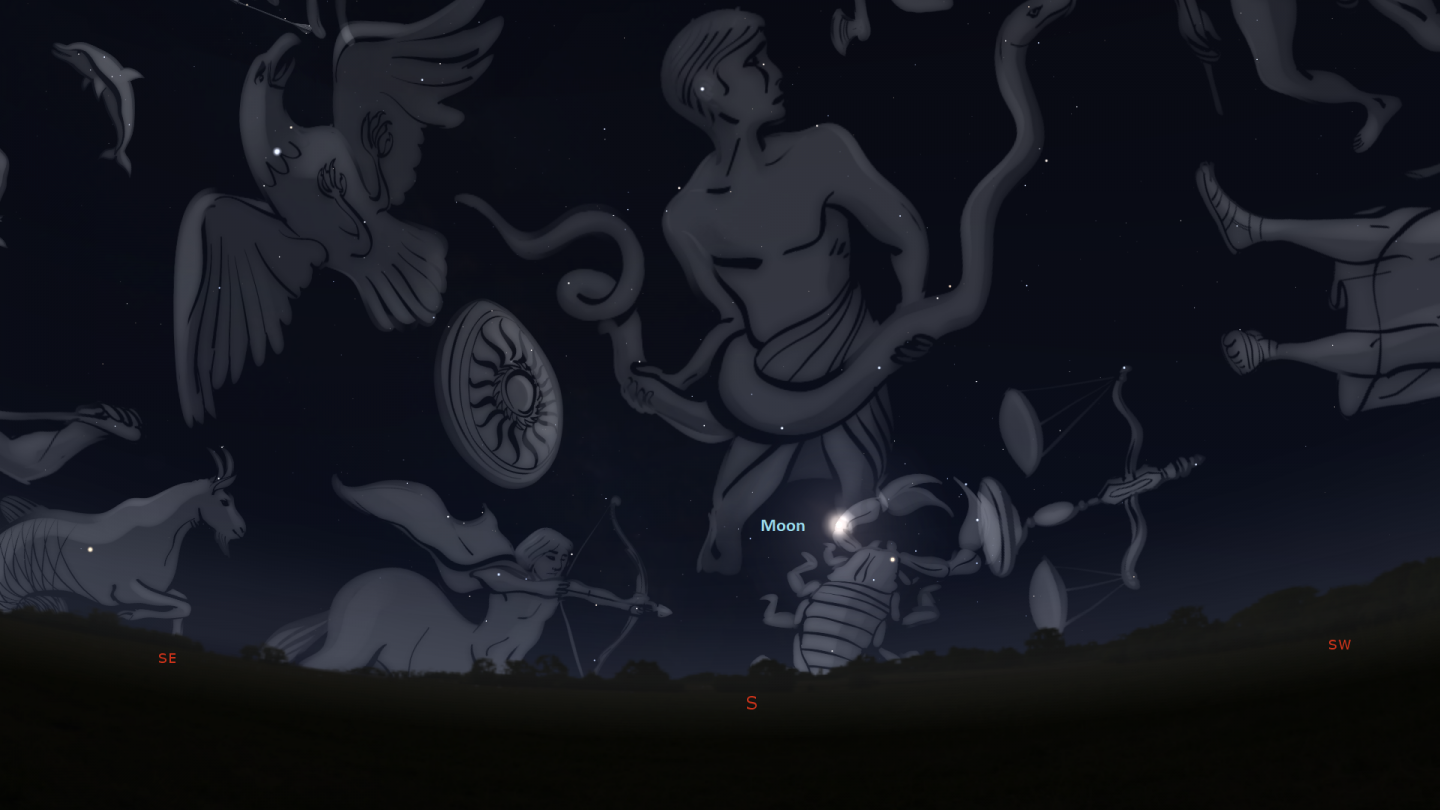
The May full moon is known as the Flower Moon because of all the flowers that bloom during this month in the Northern Hemisphere. This month’s full moon will also be a supermoon, so we can also refer to this month’s full moon as the Super Flower Moon. So what is a supermoon and will the Moon be bigger than it normally is? The Moon’s orbit around the Earth is elliptical in shape and this means that the distance between the Moon and the Earth varies as the Moon orbits the Earth.
The point at which the Moon is closest to the Earth during its orbit is called lunar perigee and the point at which the Moon is farthest from the Earth is called lunar apogee. If a full moon occurs when the Moon is closest to the Earth, it is known as a supermoon. The Moon’s physical size won’t change, but because it will be at its closest to the Earth, it can appear up to 14% bigger and 30% brighter, so it is well worth a look.
Discover more about supermoons
Why do we have special names for full moons?
Southern Hemisphere throughout the month – The Jewel Box cluster
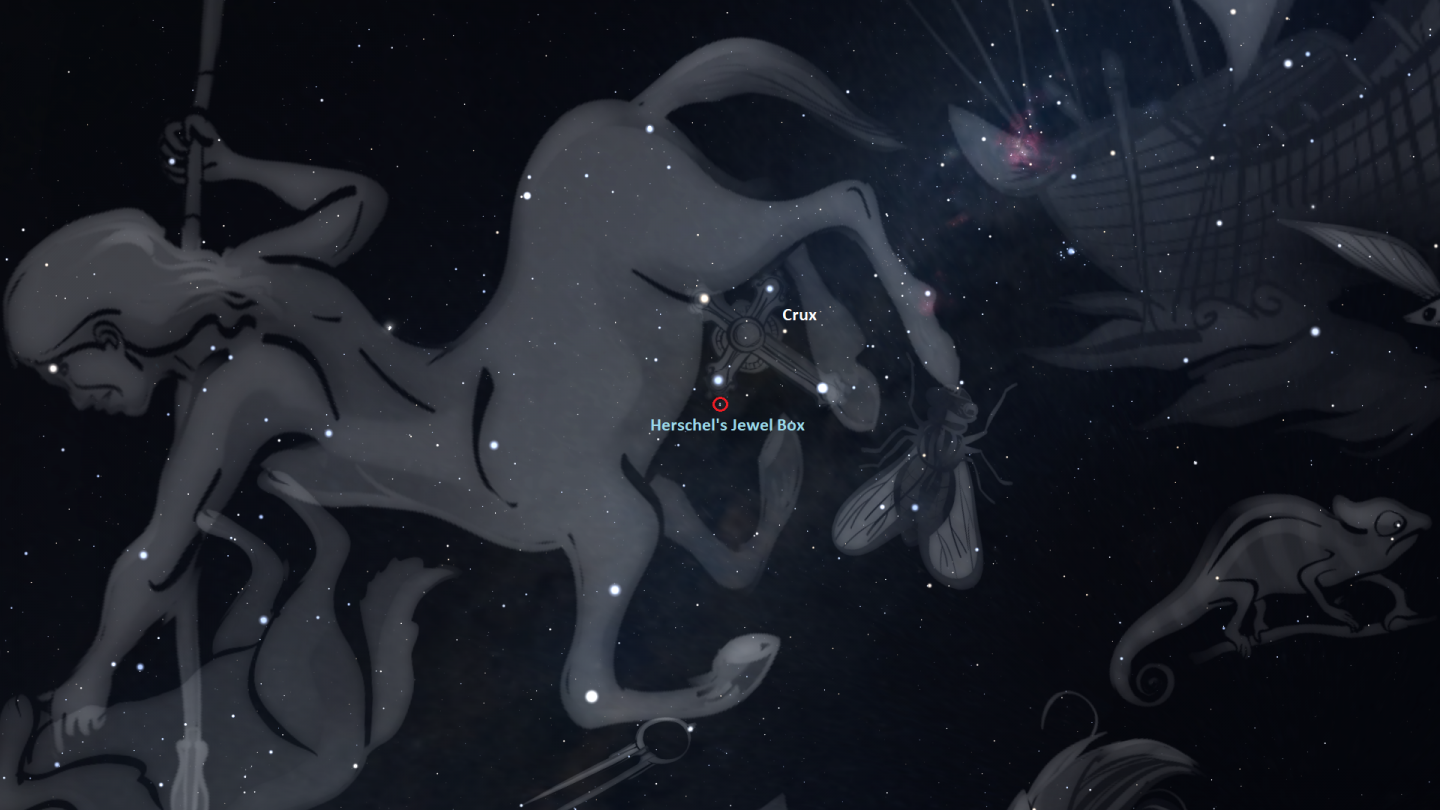
For those living in the Southern Hemisphere, autumn is well underway and although the temperature is dropping, the good news for stargazers is that the number of hours available for viewing the night sky increases as winter approaches. One object that is always worth looking at is the Jewel Box cluster, also known as Herschel’s Jewel Box. Lying in the constellation of Crux, or the Southern Cross as it is more commonly referred to, the Jewel Box is an open star cluster containing many bright stars of various shades of blue, yellow and orange.
If you’re wondering why the cluster is also known as Herschel’s Jewel Box, that’s because English astronomer John Herschel described the appearance of the cluster through a telescope as a superb piece of fancy jewellery. Grab binoculars or a telescope to view this cluster and you’ll no doubt agree with his description. The twinkling blue/white stars are like diamonds in the sky – see if you can spot the red ruby amongst the diamonds in this stellar jewel box.
Learn more about the night sky
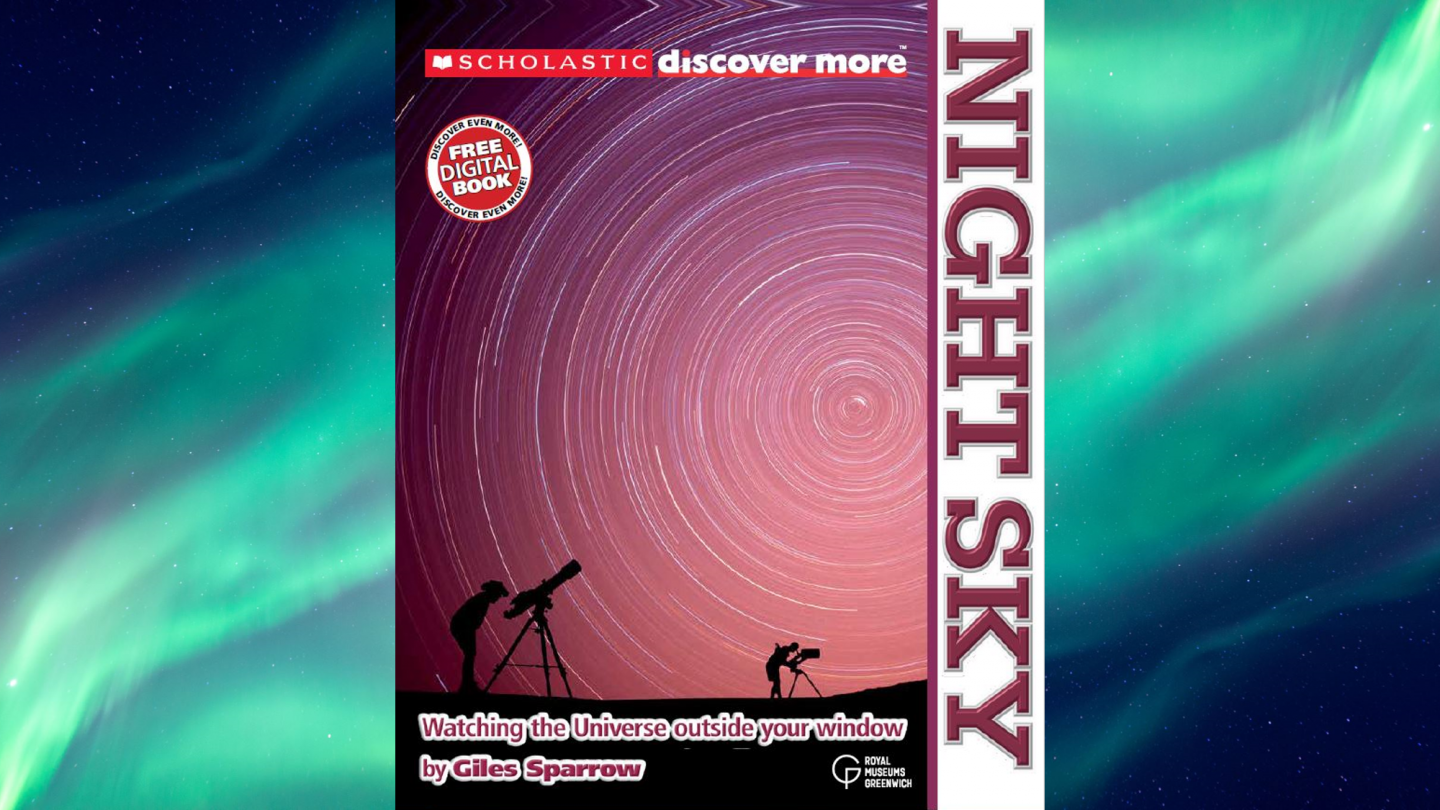
Special offer for secondary schools
Exclusive Royal Museums Greenwich publication Night Sky, for KS4/5, is a spectacular guide to the night sky and an introduction to stargazing for young astronomers.
Discover all the major constellations and their highlights and history. Explore other worlds above your head, from our neighbours the planets to galaxies far from our own. Find out how what you can see from your window reveals the secrets of our incredible Universe.
The Royal Observatory Greenwich are offering copies to secondary schools at a discounted rate of £3 per copy. If this is of interest, please contact publishing@rmg.co.uk for more information.
The Moon’s phases this month
- 3 May: last quarter moon (8:50pm)
- 11 May: new moon (8:00pm)
- 19 May: first quarter moon (8:13pm)
- 26 May: full moon (12:14pm)
See the winning pictures from Insight Investment Astronomy Photographer of the Year 2020
Stargazing Tips
- When looking at faint objects such as stars, nebulae, the Milky Way and other galaxies it is important to allow your eyes to adapt to the dark – so that you can achieve better night vision.
- Allow 15 minutes for your eyes to become sensitive in the dark and remember not to look at your mobile phone or any other bright device when stargazing.
- If you're using a star app on your phone, switch on the red night vision mode.
- Need a stargazing telescope or binoculars? Check out our range of high quality observing equipment recommended by Royal Observatory Greenwich astronomers.
See our range of observing equipment
Share your pictures
This month's banner image is 'The Faint Surroundings of the Helix Nebula' taken by Josep Drudis and it is one of the winning images from the Insight Investment Astronomy Photographer of the Year competition 2020.
Would you like the chance to have your image of the night sky used for our banner image? If so, share your photos via our Royal Observatory Astrophotography Facebook group.
You can also connect with us on Twitter: @ROGAstronomers
Subscribe to our YouTube channel and join us on a journey through time and space as we explore our Universe
Online Planetarium Shows and Sessions
Join us for live planetarium shows presented by astronomers from the Royal Observatory Greenwich
Observatory Online
In our Observatory Online video series, posted on our Twitter and YouTube accounts, our astronomers explore different topics in Astronomy and Space Exploration. Each week we’ll also show you what’s up in the night sky for that week, so keep an eye on our Twitter account if you're a keen stargazer.
Resources for teachers and students
The Royal Observatory Greenwich's learning team has also created:
- Free animated videos that answer the biggest questions in astronomy and free resources to go alongside them.
- A whole host of podcasts featuring interviews with real space scientists, astronauts and active researchers working in UK universities.
- A 'learning at home' hub which contains a suite of resources for you to use at home.
